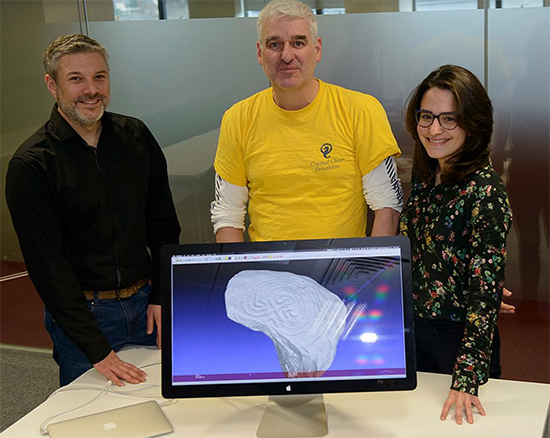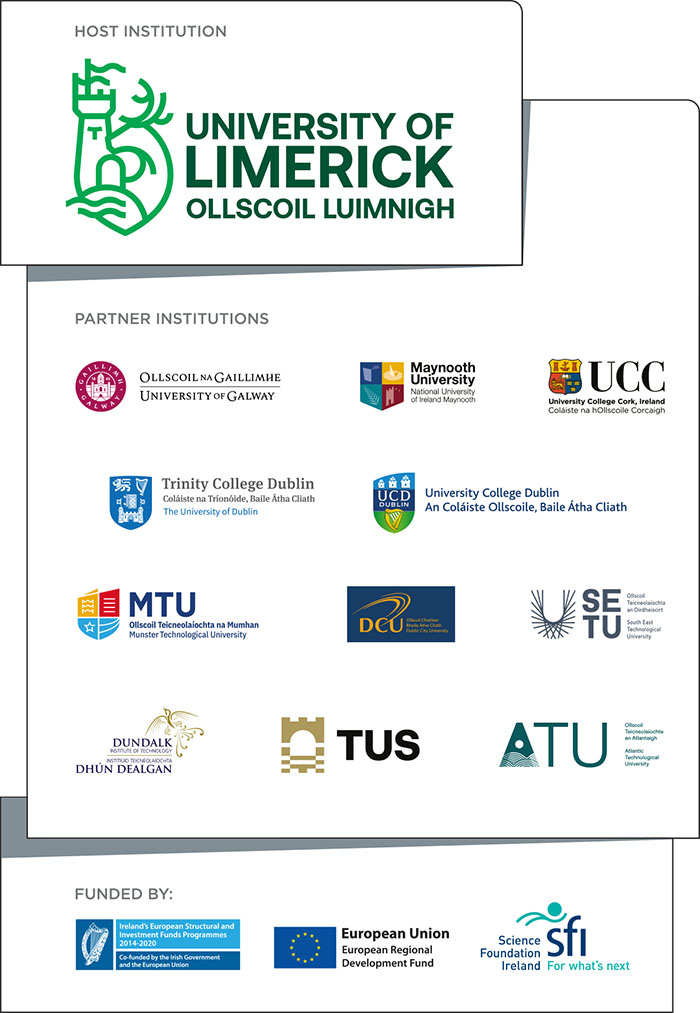How X-Box technology can help unlock the secrets of megalithic Ireland
You are here
Ireland is a rich source of megalithic symbols, such as those found at Newgrange, and archaeologists often take 3D images of these symbols in the field. However, the sophisticated techniques and expertise required to take these images is often prohibitively expensive. Dr Anthony Ventresque, Lero @ UCD and UCD School of Computer Science, along with Prof Muiris O’Sullivan, UCD School of Archaeology and Prof Mark Keane, UCD School of Computer Science, is developing a cheaper and infinitely more accessible way for archaeologists to capture 3D images in the field, using a depth camera that many people have in their own homes – the Kinect camera from the X-Box One.
pictured (l-r) UCD Computer Scientists, Dr Anthony Ventresque, Prof Mark Keane and Marta Villanueva Torres, with a 3D image of the "Hollywood stone”, a piece of Wicklow Rock Art which is on display at the Glendalough Visitor Centre in Co. Wicklow.
While a major advantage of using the Kinect to take images is its accessibility and affordability, the resulting data captured can be inaccurate. Anthony and his colleagues are developing an algorithm which will enable a much more accurate model to be created from the Kinect images. Following this, the technology will be used to capture 3D images from over 130 megalithic sites in Ireland. This will help archaeologists identify human-made symbols at these sites, which can easily be overlooked, as they sometimes resemble natural cracks in the rock, or appear to have resulted from weather-related changes.
The development of the resulting dataset, the first of its kind in the world, will allow archaeologists to identify relationships between the symbols which have been recorded, by facilitating searches for symbols with common characteristics. This ability will give clues as to what these symbols once represented, and perhaps reveal hidden relationships between sites and stones based on the symbols they contain.
While the development of an Irish dataset is at the forefront of this project, Anthony has ambitious plans to expand the data capture beyond Ireland and is liaising with colleagues in Scotland and France with a view to making the dataset available internationally.





